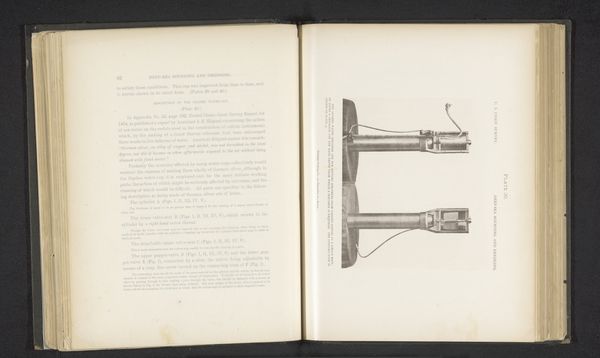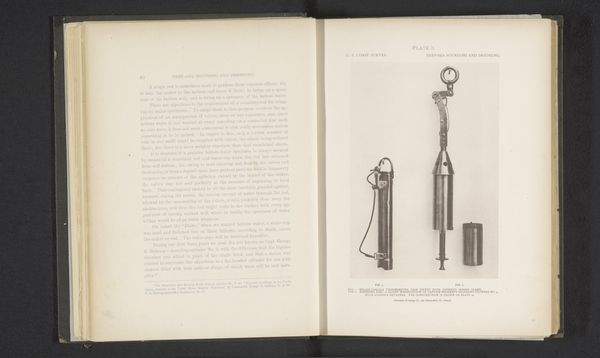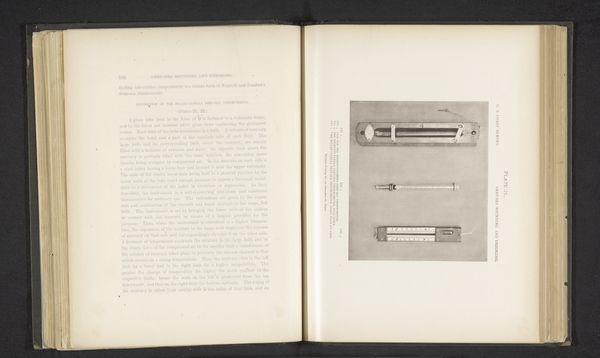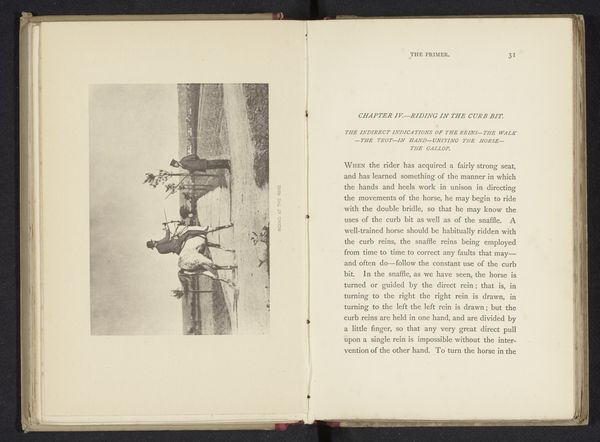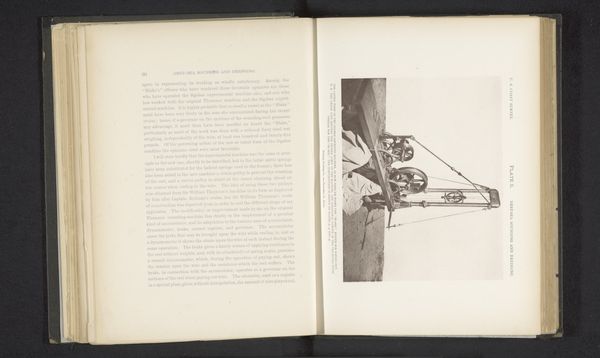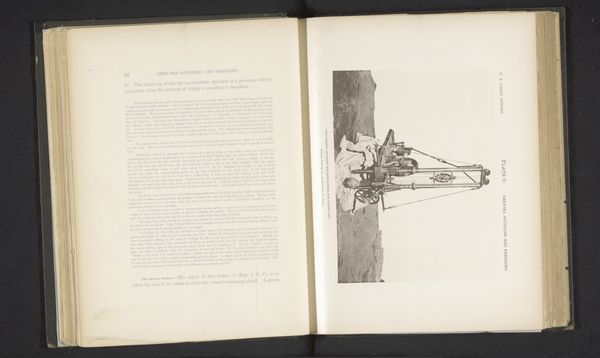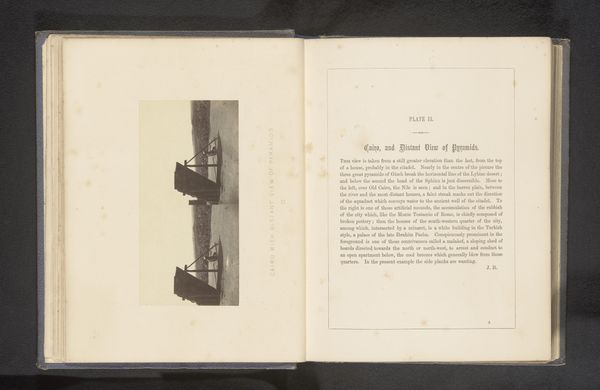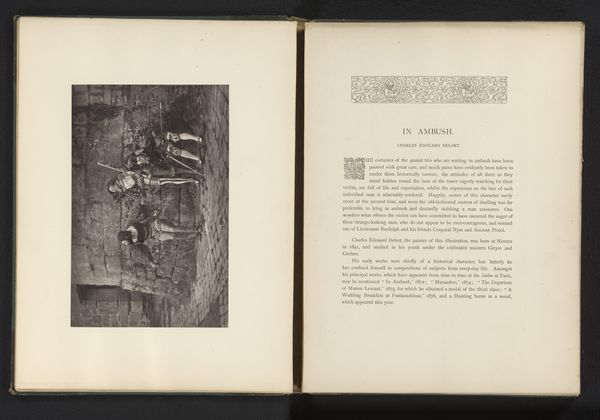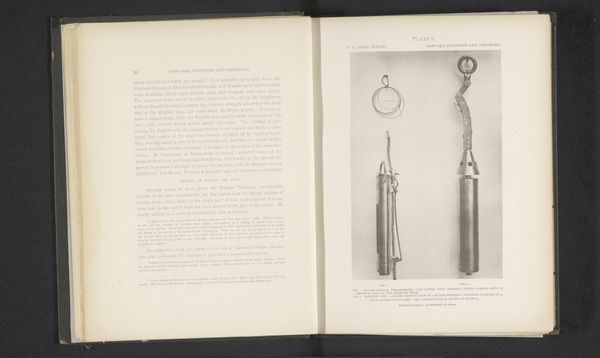
print, engraving
# print
#
academic-art
#
engraving
Dimensions: height 227 mm, width 293 mm
Copyright: Rijks Museum: Open Domain
Editor: Here we have a print titled "Sigsbee-sondeermachine," created before 1880, using engraving. The sharp lines create a real sense of precision. I’m curious, what stands out to you when you look at this? Curator: I immediately see the industrial labor involved in creating both the machine depicted and the print itself. Engraving was a highly skilled and laborious process, so how does that affect our reading of a scientific instrument being represented? This also prompts considering its accessibility; who would’ve had access to it? Editor: So you're suggesting the print isn't just a neutral representation, but is tied to ideas of labour and social status? Curator: Precisely! This wasn’t mass produced. We must ask: who was commissioning these images, who had the means to produce them? Understanding the labor involved highlights its social implications. It brings a stark clarity, considering how drastically the value placed on manual skills evolved over time. Editor: That’s fascinating. It changes how I see the object completely. I'm no longer simply considering it as an objective tool! Curator: Indeed. By interrogating its materiality – the ink, the paper, the very act of engraving - we see its connection to broader social and economic structures. Editor: I see your point. Analyzing this artwork has broadened my thinking of historical art's material contexts. Curator: And it also underlines the hidden stories residing within the piece, transforming the way we perceive scientific advancement during this historical period.
Comments
No comments
Be the first to comment and join the conversation on the ultimate creative platform.
